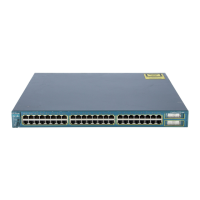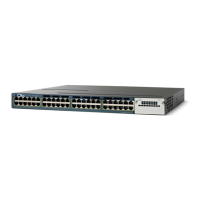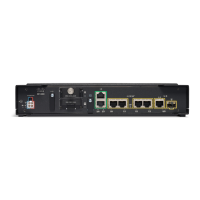Index
IN-20
Catalyst 3550 Multilayer Switch Software Configuration Guide
78-11194-09
Kerberos
authenticating to
boundary switch
8-35
KDC 8-35
network services 8-35
configuration examples 8-32
configuring 8-35
credentials 8-32
cryptographic software image 8-32
described 8-32
KDC 8-32
operation 8-34
realm 8-33
server 8-34
switch as trusted third party 8-32
terms 8-33
TGT 8-34
tickets 8-32
key distribution center
See KDC
L
l2protocol-tunnel command 15-11
LACP
Layer 2 protocol tunneling
15-9
See EtherChannel
Layer 2 frames, classification with CoS
29-2
Layer 2 interfaces, default configuration 10-12
Layer 2 protocol tunneling
configuring
15-9
configuring for EtherChannels 15-13
default configuration 15-10
defined 15-7
guidelines 15-10
Layer 2 traceroute
and ARP
37-15
and CDP 37-15
described 37-14
IP addresses and subnets 37-15
MAC addresses and VLANs 37-15
multicast traffic 37-15
multiple devices on a port 37-15
unicast traffic 37-14
usage guidelines 37-15
Layer 2 trunks 12-16
Layer 3 features 1-6
Layer 3 interfaces
assigning IP addresses to
31-6
changing from Layer 2 mode 31-6
types of 31-3
Layer 3 packets, classification methods 29-2
LDAP 5-2
leave processing, IGMP 20-10
lightweight directory access protocol
See LDAP
line configuration mode
2-3
Link Aggregation Control Protocol
See LACP
links, unidirectional
23-1
link state advertisements (LSAs) 31-33
link-state protocols 31-2
load balancing, IGRP 31-25
logging messages, ACL 28-10
login authentication
with RADIUS
8-23
with TACACS+ 8-14
login banners 7-18
log messages
See system message logging
long-distance, high-bandwidth transport configuration
example
1-19
Long-Reach Ethernet (LRE) technology 1-10
loop guard
described
18-13
enabling 18-21
support for 1-4
LRE profiles, considerations in switch clusters 6-18

